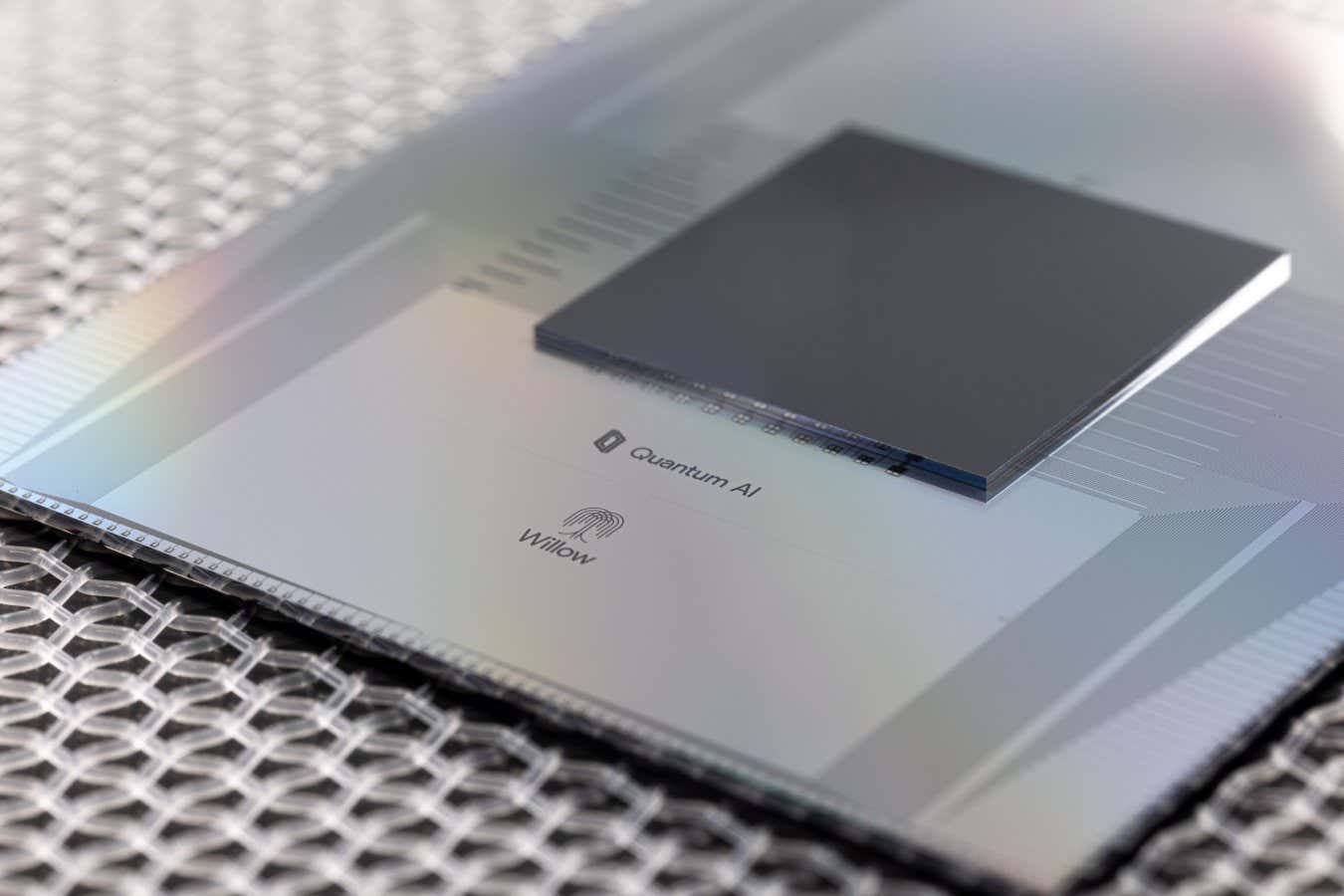

Google’s quantum computing Willow chip
Google Quantum AI
Researchers at Google Quantum AI have used their Willow quantum computer to help interpret data from Nuclear Magnetic Resonance (NMR) spectroscopy, a mainstay of chemistry and biology research. The work puts quantum computers on the precipice of being able to usefully augment commonplace molecular technologies.
The most rigorously proven uses for quantum computers are in breaking cryptography, but today’s devices are too small and error-prone to run decryption algorithms. Another place where they could make strides, though, is in accelerating procedures used to discover new drugs and materials. Such procedures are inherently quantum in nature, so they make a good match for the capabilities of quantum computers. Hartmut Neven and his colleagues at Google Quantum AI have now demonstrated one example where a quantum computer’s ability to “speak the same language as nature” could prove valuable.
The team’s work focused on a computational protocol called Quantum Echoes and the ways in which it can be applied to NMR, which is used to determine the microscopic details of a molecule’s structure.
The idea at the core of Quantum Echoes is similar to the butterfly effect – the phenomenon where a small disturbance causes a large consequence in the bigger system that it belongs to, such as the flapping of a butterfly’s wings leading to a faraway storm. The researchers used a quantum version of this in a system made of 103 qubits within Willow.
In experiments, the researchers first applied a specific sequence of operations to their qubits, which changed the qubits’ quantum states in a controlled way. Then they picked one specific qubit to perturb, which would act as a “quantum butterfly”, before applying the same sequence of operations as before but reversed in time, like rewinding a video tape. Finally, the team measured the quantum properties of the qubits, which they analysed to learn information about the whole system.
In the simplest sense, the NMR procedure used in laboratories also relies on tiny perturbations, this time nudging real molecules with electromagnetic waves, then analysing how the system reacts to determine the relative positions of atoms, like a molecular ruler. When qubit manipulations emulate this process, a mathematical analysis of the qubits could also be translated into details of the molecule’s structure. This quantum computing step stands a chance of letting us see between atoms that are further away from each other, says team member Tom O’Brien. “We’re building a longer molecular ruler.”
The team estimates that running a protocol akin to Quantum Echoes on a conventional supercomputer would take about 13,000 times longer. Their testing also showed that two different quantum computers could each run Quantum Echoes and produce the same results, which wasn’t the case for some of the quantum algorithms the team has championed in the past. O’Brien says this is possible in part due to rapid improvements in the quality of Willow’s hardware, such as decreasing its qubits’ error rates.
But there are still improvements to be made. When the researchers used Willow and Quantum Echoes for two organic molecules, they only used up to 15 qubits at a time and the result of the calculation could still be matched by conventional, non-quantum methods. In other words, the team has yet to prove that Willow has an unambiguously practical advantage over its classical counterparts. The demonstration of this specific application of Quantum Echoes is currently preliminary and hasn’t undergone a formal peer review process.
“The question of molecular structure determination is an extremely important and relevant one,” says Keith Fratus at HQS Quantum Simulations, a company based in Germany that develops quantum algorithms. He says creating a connection between an established technique like NMR and calculations performed on a quantum computer is an important step, but for the time being, the usefulness of the technique would probably be limited to highly specialised studies in biology.
Dries Sels at New York University says the team’s experiment uses a larger quantum computer and considers more complex NMR protocols and molecules than have been modelled on quantum computers before, including by him and his colleagues. “Quantum simulation is often quoted as one of the key prospective use cases for quantum computers, but there are remarkably few examples of industrially interesting cases… I think model inference on spectroscopic data, like NMR, could prove useful,” he says. “I don’t think we are there yet, but works like this provide motivation to keep studying the problem.”
O’Brien says applying Quantum Echoes to NMR will become more useful as the team keeps advancing the performance of their qubits. The fewer errors they make, the more of them that can be used for the protocol at once, thus bringing larger and larger molecules into consideration.
In the meantime, the search for the best uses for quantum computers is certainly far from over. Running Quantum Echoes on Willow is experimentally extremely impressive, but the mathematical analysis it enables is unlikely to find broad use, says Curt von Keyserlingk at King’s College London. He says until it can definitively beat out what NMR specialists have already been doing for decades, its main appeal will be to physics theorists who focus on fundamental studies of quantum systems. And the protocol may not be fully future proof – von Keyserlingk says he already has ideas about how conventional computing could compete with it.
Topics:



